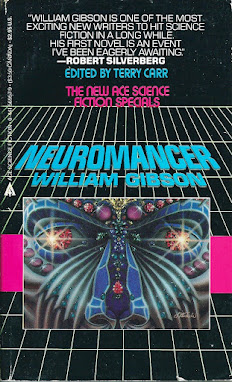Ring of Roses
Das Petrou, John Watkiss, Trevor Goring,and Mike McClester
Dark Horse comics 1992 - 1993; Image Comics (graphic novel) 2004
'Ring of Roses' first was published by Dark Horse Comics as a four-issue limited series from November 1992 - February 1993. The series was republished in 2004, as a graphic novel compilation, by Image Comics.
As writer Das Petrou relates in the introduction to the graphic novel, in the early nineties he was an advertising writer, and he teamed up with artist Watkiss, and advertising designer Goring, to do a comic with overtones of Camus' The Plague. Petrou also was interested in incorporating a theme about secret societies (the Knights Templars, the Rosicrucians, the Illuminati, etc.) fomenting a political conspiracy.
It's London, Summer, 1991......but an alternate London, where, in a manner akin to that outlined in Keith Robert's 'Pavane', the Catholic Church rules Great Britain.
Where Roberts had a victorious Spanish Armada serving as the vehicle for Catholic ascendancy, here, it's James the Second's victory in the Battle of the Boyne in July 1690 that has enabled the Church to assume power.
It's an uneasy world, however. What could be the First World War is underway on the Continent, and a British populace increasingly discontented with Papal rule. In an effort to retain British loyalties, Pope John XXIX is visiting London on a good-will tour.
This is a London where technology has advanced only to a point equivalent to the 1920s or 1930s of 'our' 1991. The police and military are armed with crossbows, radio is a newfangled gadget, antibiotics have yet to be discovered, and public health, an evolving institution.
London's population is squeezed within the city walls, and the poorer districts are filled with garbage, dilapidated housing, and........rats.
Samuel Waterhouse is a prosperous lawyer (er, 'barrister') who moves within the aristocratic circles of London society and politics. When ten priests go missing on the eve of the Pontiff's visit, a group of clerics ask Waterhouse to do some impromptu detective work.
When Waterhouse finds his inquiries stonewalled by the establishment, he enlists the aid of a roughneck brawler, William Barnet, whose familiarity with the criminal world allows him access otherwise unavailable to an upstanding member of society.
As Barnet pokes within the dark corners of London, there are worrisome developments elsewhere in the city. An outbreak of severe illness is growing among the population, and by official order, the city gates - already scheduled to be closed for the week of the Pope's visit - are to be closed indefinitely to prevent its spread to the outlying districts.
Before long, the plague, and a conspiracy emplaced by the highest levels of the city government, collide to make London a dangerous place for Samuel Waterhouse and William Barnet.
But if they fail in their efforts to unmask the conspirators, the death toll will be enormous...for the worst of the plague has yet to be visited upon London......
To me, Ring of Roses is an interesting melding of the novel 'Pavane' by Keith Roberts, and the 1977 thriller 'The Black Death' by Gwyneth Cravens and John S. Marr, still one of the best "plague loose in a modern city" novels ever written.
There are some weaknesses to Ring of Roses, however, and these can make the series difficult to understand. One weakness is the lack of sufficient external narration to keep the various plots and sub-plots coherent.
This emerges as a real problem when writer Petrou commissions one page to address two different plot threads, using text boxes reflective of one character's internal monologue superimposed on panels illustrating a different character, busy at something associated with an independent plot thread. This sort of quasi-cinematic jump-cutting occurs too frequently for its own good, and in fact, I had to re-read Ring several times before the sub-plots and side narratives finally made sense.
But the major drawback to the book is Watkiss's artwork. It's too loose, too half-finished, too murky. [A Spanish artist named Antonio Navarro was originally chosen to illustrate the series, but withdrew when it became clear he couldn't meet the deadline]. I frequently found myself having to peer at a panel for an overlong amount of time in order to decipher Watkiss's figurative style of draftsmanship.
Things aren't helped by the fact that the graphic novel released by Image uses an off-white, putty-tinted paper, that makes the artwork even more opaque and difficult to make out.
[My advice is to seek out the original comic books, which are available at eBay for reasonable prices, and which used a white paper stock.]
In 2004 Petrou was approached by two film companies in regard to licensing rights to Ring of Roses, nothing ever came to fruition.
In summary, despite mediocre artwork, and a narrative that often gets too complicated for its own good, Ring of Roses is one of the more clever treatments of an alternate, quasi-Steampunk UK, and readers with a fondness for that subgenre of sf will want to take a look.

























































.jpg)

















